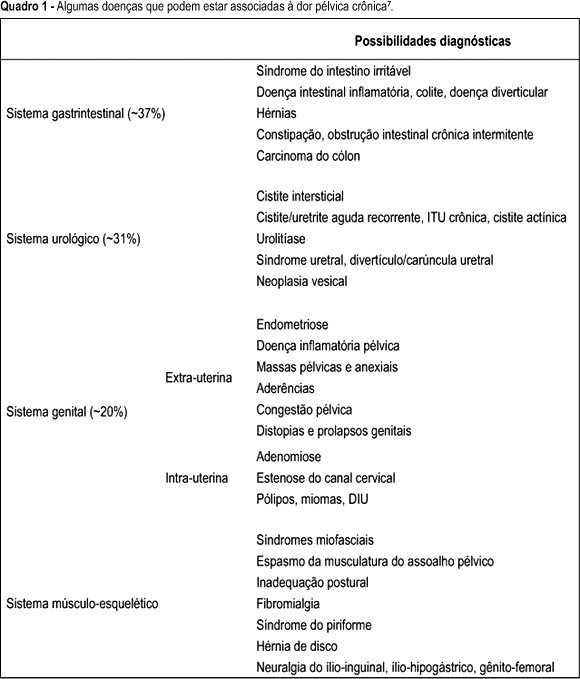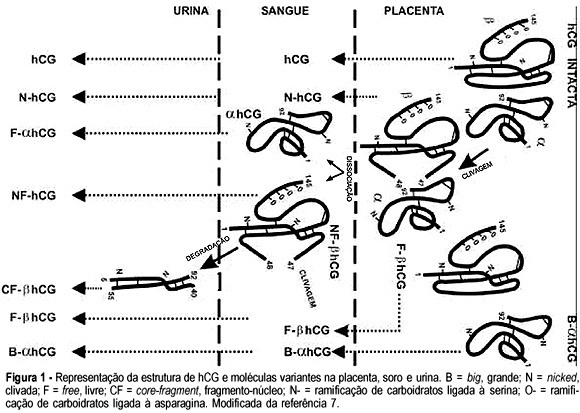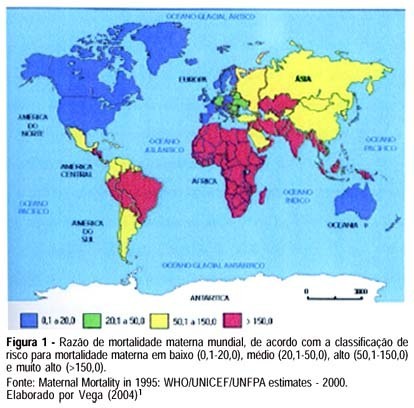Summary
Revista Brasileira de Ginecologia e Obstetrícia. 2006;28(12):733-740
DOI 10.1590/S0100-72032006001200008
Chronic pelvic pain is a debilitating and highly prevalent disease with a major impact on quality of life and work productivity, beyond significant costs to health services. The dilemma of managing patients with chronic pelvic pain continues to frustrate physicians confronted with these complaints, in part because its pathophysiology is poorly understood. Consequently, its treatment is often unsatisfactory and limited to temporary symptom relief. In the present revision, we discuss the adequate management of chronic pelvic pain. We point out that a comprehensive medical history and physical examination should include special attention to gastrointestinal, urological, gynecological, muscle-skeletal, neurological, psychiatric, and endocrine systems. Thus, a multidisciplinary approach is recommended. Additionally, we emphasize that, although useful, specific surgical procedures, such as laparoscopy, should be indicated only to selected patients, mainly after excluding irritable bowel syndrome and pain of myofascial origin.

Summary
Revista Brasileira de Ginecologia e Obstetrícia. 2006;28(10):612-623
DOI 10.1590/S0100-72032006001000008
Despite a wide heterogeneity of clinical manifestations related to endometriosis, a high prevalence of the disease is observed in infertile women and in those with chronic pelvic pain. This enigmatic condition has a high socioeconomic impact, and the described data regarding efficacy of the therapeutic approaches are quite conflicting. Thus, the purpose of the present study was to describe the available scientific evidence about the applicable therapeutic modalities and to provide recommendations for the treatment of infertility and the chronic pelvic pain related to endometriosis. Although suppression of ovarian function in patients with minimal or mild endometriosis is not effective in improving fertility, ablation of the lesions associated with adhesiolysis seems to be more effective than exclusive diagnostic laparoscopy. There is no sufficient evidence to determine whether surgical excision in cases of moderate or severe disease would improve the pregnancy rates. In vitro fertilization seems to be an adequate approach, especially in cases of coexistence of infertility factors and/or failure of other treatments. The possibility of using GnRH for 3 to 6 months before in vitro fertilization should be considered. Regarding pain relief, suppression of ovarian function for 3 to 6 months in patients with laparoscopically-confirmed disease reduces the pain associated with endometriosis. All studied medication seem to have similar efficacy, differing only in terms of adverse effects and costs. Ablation of endometriotic lesion reduces the pain associated with endometriosis, being less effective in cases of minimal disease. Exeresis of endometriomas with diameter > 4 cm seems to improve the rate of natural fecundity and the rate for ??? obtained after assisted reproduction procedures, in addition to reducing both pain and recurrence risk. Finally, it is important to emphasize that this subject is much controversial and the recommendations herein described should be revised as randomized controlled clinical trials with adequate casuistic generate more concrete and reliable evidence.
Summary
Revista Brasileira de Ginecologia e Obstetrícia. 2006;28(9):557-564
DOI 10.1590/S0100-72032006000900009
Pregnant women may depend on the use of medications to minimize the problems caused by preexisting disease, and pregnancy itself can cause situations that compromise the maternal well-being and that require treatment. The obstetrician should be aware of the placental transfer of drugs and of fetal exposure to teratogenic or toxic agents that might compromise the development of the fetus or even its future life.Transport through the placenta involves the movement of molecules between three compartments: maternal blood, cytoplasm of the syncytiotrophoblast, and fetal blood. This movement can occur through the following mechanisms: simple diffusion, facilitated diffusion, active transport, class P, V, F and large ABC family pumps, and endocytosis. With the use of anticonvulsants the incidence of major malformations in exposed newborns is 4 to 6%, compared to 2 to 4% in the general population. Multidrug treatment is more damaging, especially when valproic acid and hydantoin are part of the combination. The recommendation for epileptic patients who have been clinically asymptomatic for two years is to discontinue the drugs they are taking. However, if seizures occur it is advisable to consult a neurologist to discuss anticonvulsant therapy with better benefits and less side effects.Local anesthetics and opioids are extensively used during the resolution of pregnancy. Lidocaine applied by the perineal route for episiotomy at a fixed dose of 400 mg presents a high concentration in maternal plasma and a high rate of placental transfer at the time of birth, with the need for caution regarding the use of repeated doses. Bupivacaine administered by the epidural route is a safe anesthetic which is present in the racemic form and has a placental transfer of about 30%. Fentanyl, an opioid anesthetic used by the epidural route in resolution of cesarean section at the fixed dose of 0.10 mg, presents high rates of placental transfer of the order of 90%, requiring caution with the use of repeated doses for analgesia during labor.
Summary
Revista Brasileira de Ginecologia e Obstetrícia. 2006;28(6):365-372
DOI 10.1590/S0100-72032006000600008
As therapeutic approaches for oncologic diseases are being improved and an increase in the survival rates are being achieved, long-term complications of these therapies, initially infrequent, assume these days an important place when considering life quality. Among the long term repercussions appears the premature ovarian failure. According to the recommendations of the American Society of Clinical Oncology recently published, the only procedures available nowadays considered to be effective for female fertility preservation are: embryo cryopreservation, conservative gynecological surgery and oophoropexy in cases of local radiotherapy. All the other proposed techniques, surch as: ovarian suppression and oocyte and ovarian tissue cryopreservation, although present promising results, are still considered as experimental options. The best choice for fertility preservation in each specific case depends on patient's age, type of treatment, existence of a partner, time available until chemo- or radiotherapy beginning, and the ovarian metastatic potential of the tumor. In the present manuscript, the available and experimental techniques for fertility preservation are revised and discussed.
Summary
Revista Brasileira de Ginecologia e Obstetrícia. 2006;28(4):251-263
DOI 10.1590/S0100-72032006000400008
The human chorionic gonadotropin (hCG) results from a non-covalent linkage of two subunits, alpha (alphahCG) and beta (betahCG), separately synthesized by normal trophoblastic tissue, hydatiform mole, choriocarcinoma, pituitary cells, and tumoral tissues of different histologic types. The peptide chain and its further glycosylation in the secretory cell involves the complex action of different enzymes. This complexity results in the secretion of heterogeneous molecular forms. The different molecules might be found in serum, urine and amniotic fluid of pregnant women; serum, urine, and vesicles of patients with hydatiform mole or choriocarcinoma and in other biological fluids of normal non-pregnant women and men or patients with different embryonary types of cancer. Both the intact hCG molecule and its free subunits and the hyperglycosylated (H-hCG), nicked (N-hCG) and core fragment of betahCG (CF- betahCG) variant forms have relevant clinical use. Depending on the prevalent molecular form or the proportion of the variant form to the intact hCG in a determined clinical situation the measurement of a specific molecule is chosen. This review analyzes the clinical use of hCG and its related molecules in the early detection of ectopic pregnancy or patients with higher risk of abortion, in the identification of an embryo or fetus with chromosomal abnormalities, and in the evaluation of risk for preeclampsia or fetal growth restriction. The review also examines the use of hCG and variant forms as tumor markers. It is concluded that it is useful to measure hCG and/or related molecules in clinical practice, but difficulties in developing and achievement of more sensitive and specific new assays limit their use.

Summary
Revista Brasileira de Ginecologia e Obstetrícia. 2006;28(5):310-315
DOI 10.1590/S0100-72032006000500008
Maternal mortality rate (MM) is a health quality indicator that is directly influenced by the economic, cultural and technological level of a country. Official data of MM in Brazil, although underestimated, point to the lack of quality in pregnancy, childbirth and puerperium care services. This characteristic is common in developing countries, where poorer pregnant women as well as those facing greater difficulty to quality care access are found. Prenatal care cannot prevent major childbirth complications, which are important causes of MM; however, some interventions during the prenatal period can favor maternal prognosis and prevent MM. In this setting, this study brings a scientifically based update concerning effective interventions for maternal mortality prevention during the prenatal period. The most important strategies consist of a tripod with specific interventions related to maternal health promotion, risk prevention and assurance of nutritional support during gestation, in addition to criteria to investigate gestational risk and inclusion of the pregnant woman in the basic component of the prenatal care model. It ends with the definition of priorities in the prevention of MM related to eclampsia/preeclampsia and reinforces the importance of normalization of reference systems for obstetric emergency cases.

Summary
Revista Brasileira de Ginecologia e Obstetrícia. 2006;28(3):195-204
DOI 10.1590/S0100-72032006000300010
Breast cancer is one of the most common malignancies among women. Its diagnosis and treatment have social, economic, physical, emotional/psychological and sexual repercussions. The main parameters used to assess the results of anticancer therapy are disease-free survival and overall survival. More recently, quality of life (QOL) has been considered an additional parameter. No consensus exists about the definition of QOL. However, most definitions take into account multidimensional and subjective aspects of QOL. The identification of factors related to QOL and comprehension of how these factors contribute to the perception of QOL are reasons for debate, since the concept of QOL is directly related to the social and cultural context in which the individual is inserted. Age at diagnosis, chemotherapy, type of surgery, climacteric symptoms, relationship between the couple, and sexuality are several factors associated with QOL in women with breast cancer. QOL associated with different antineoplastic therapies may help patients and physicians choose the best therapeutic modality. Towards this end, the current article addresses various aspects of QOL of breast cancer women, and presents the state-of-the-art knowledge on the topic.